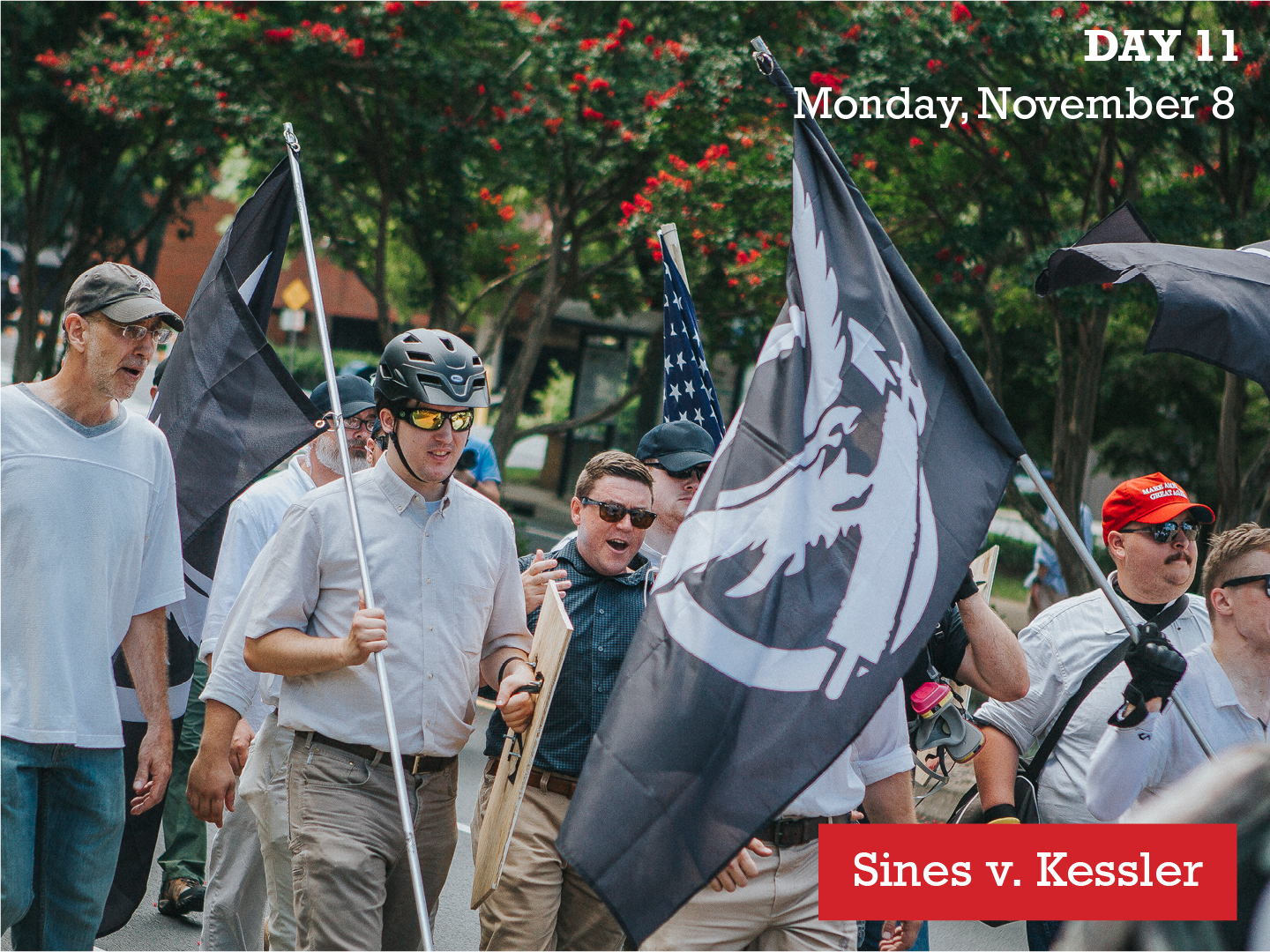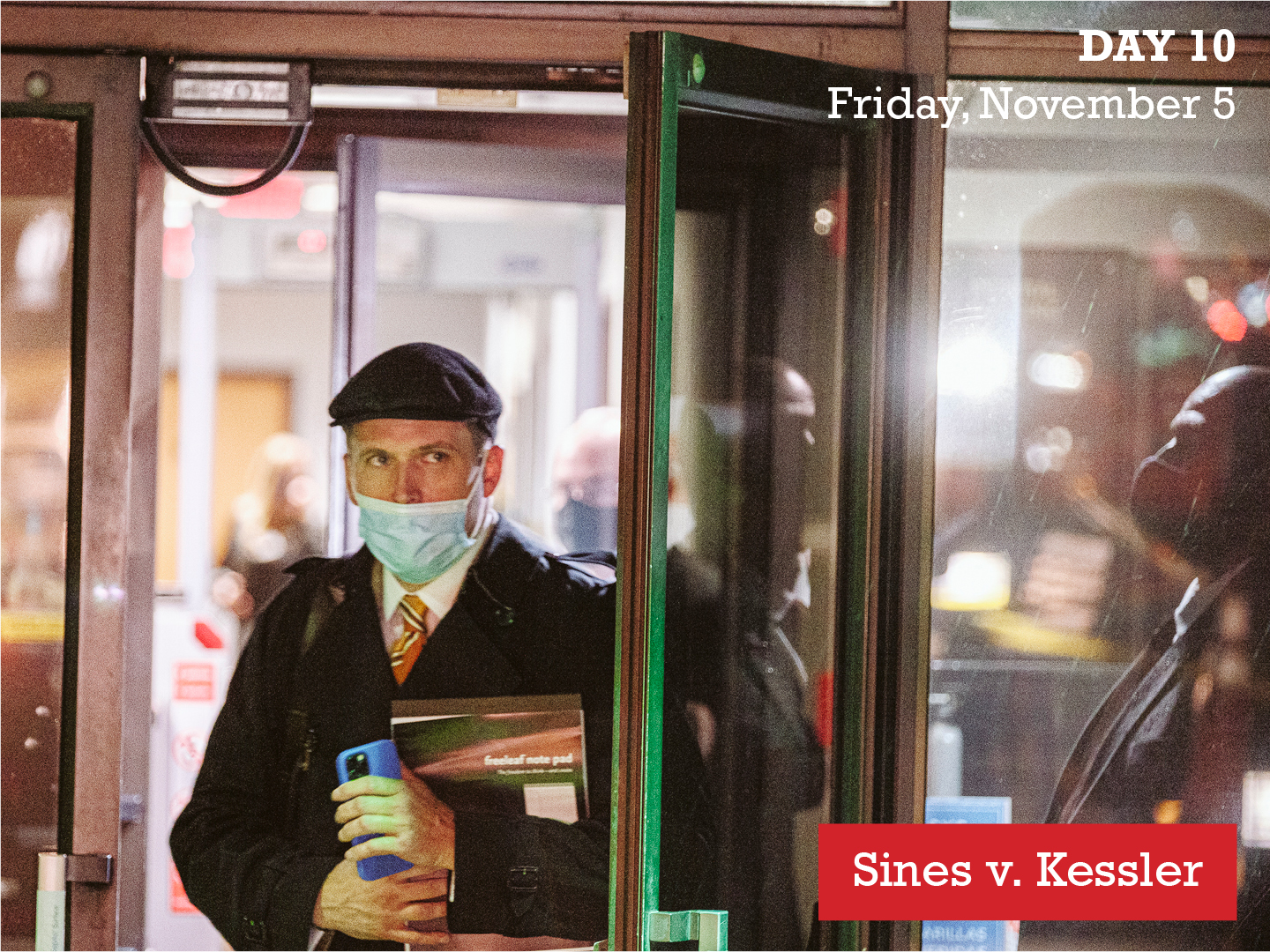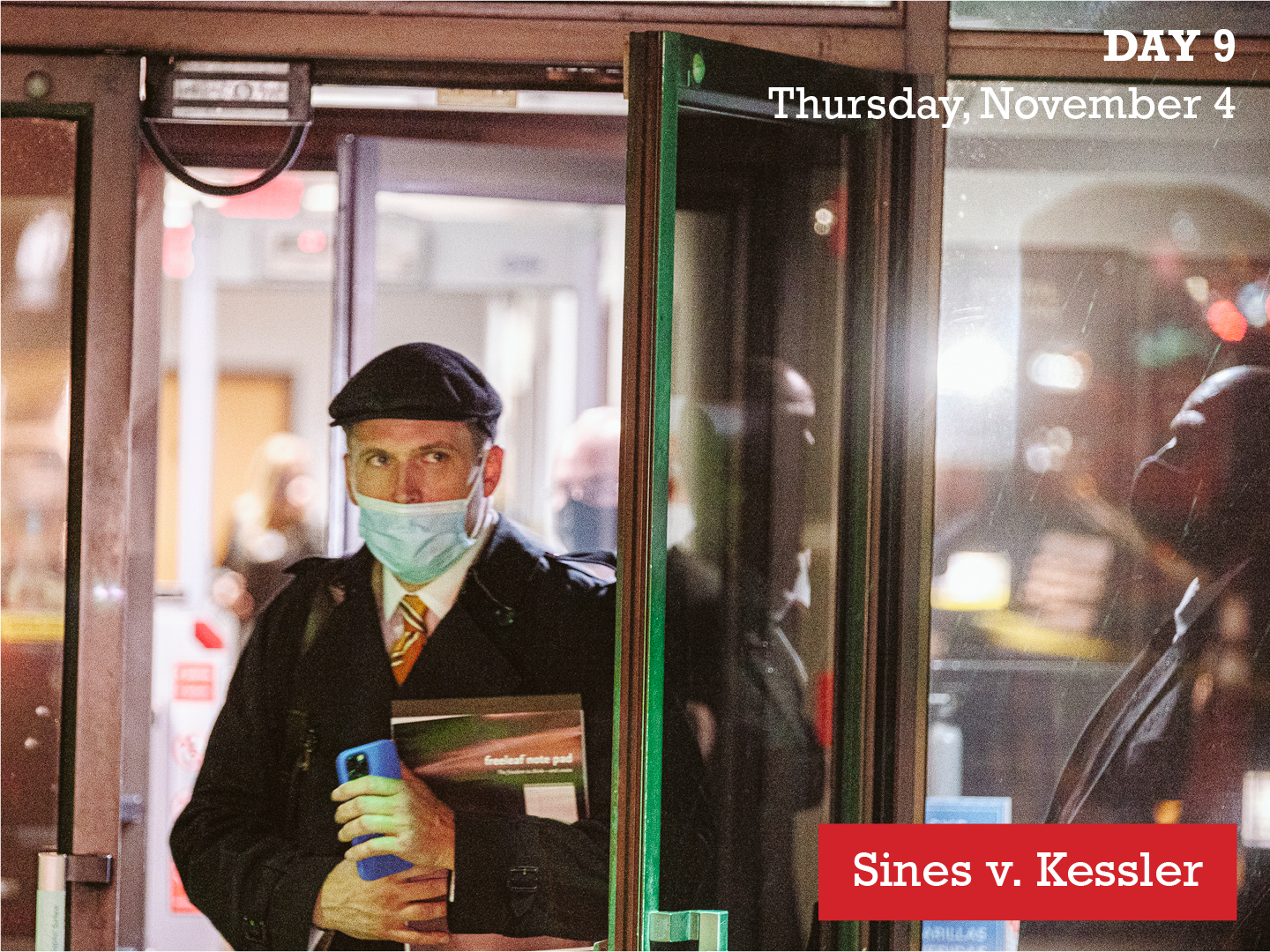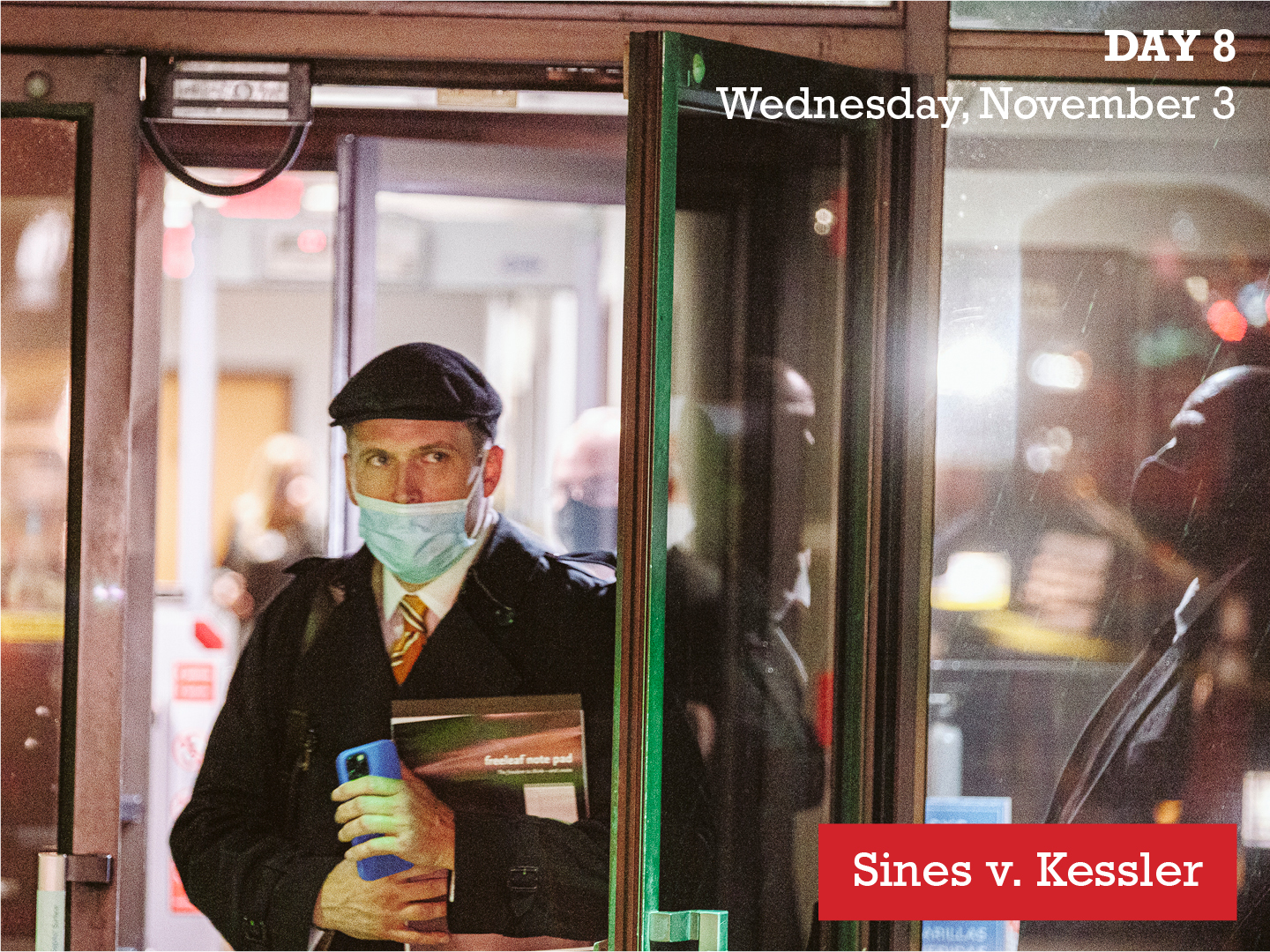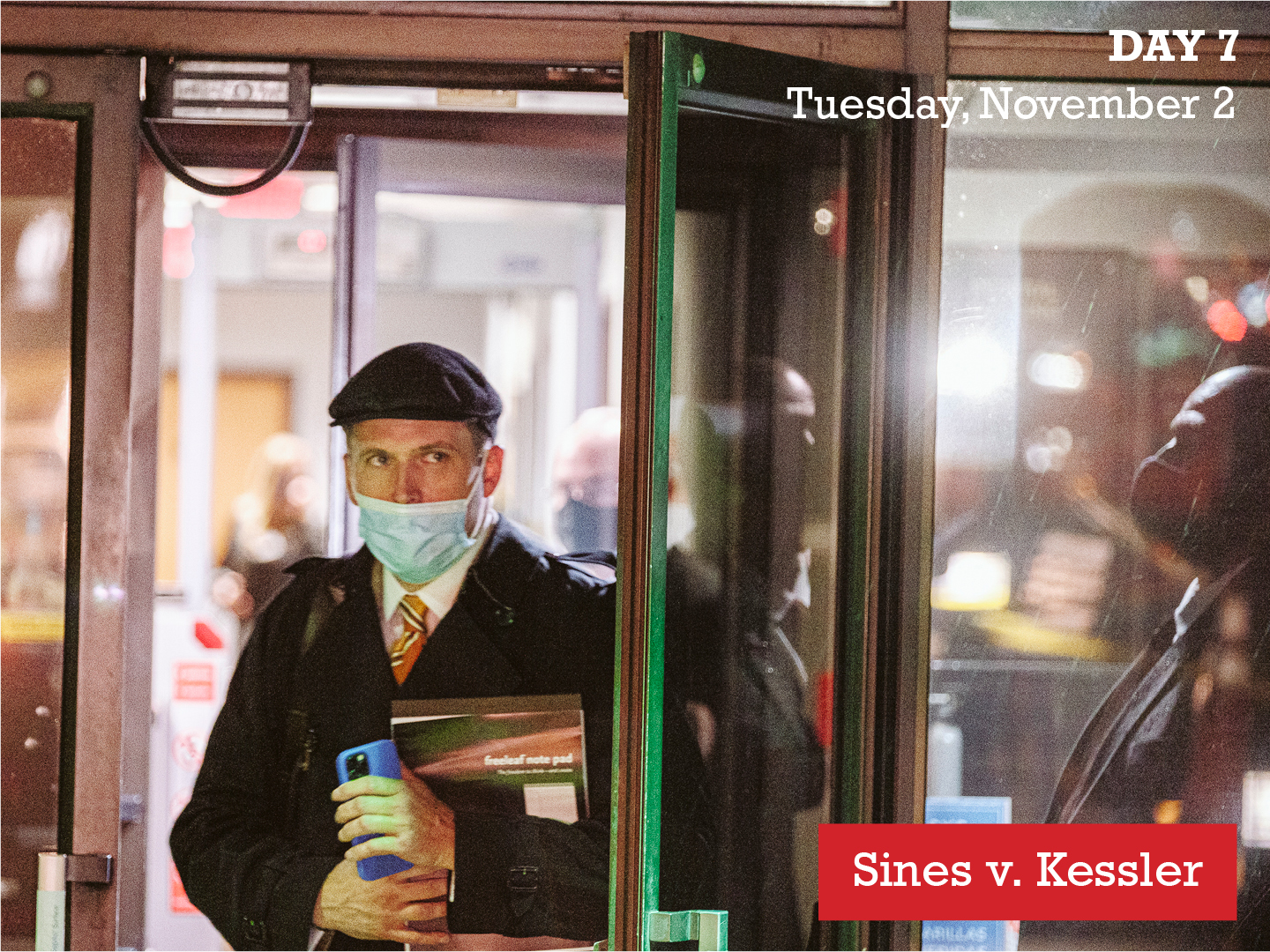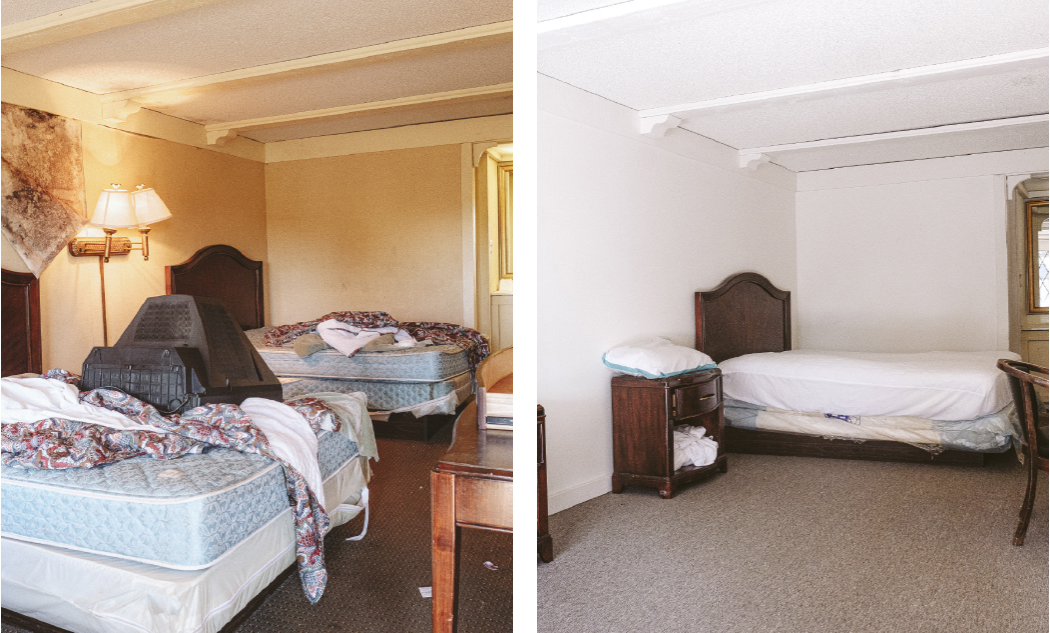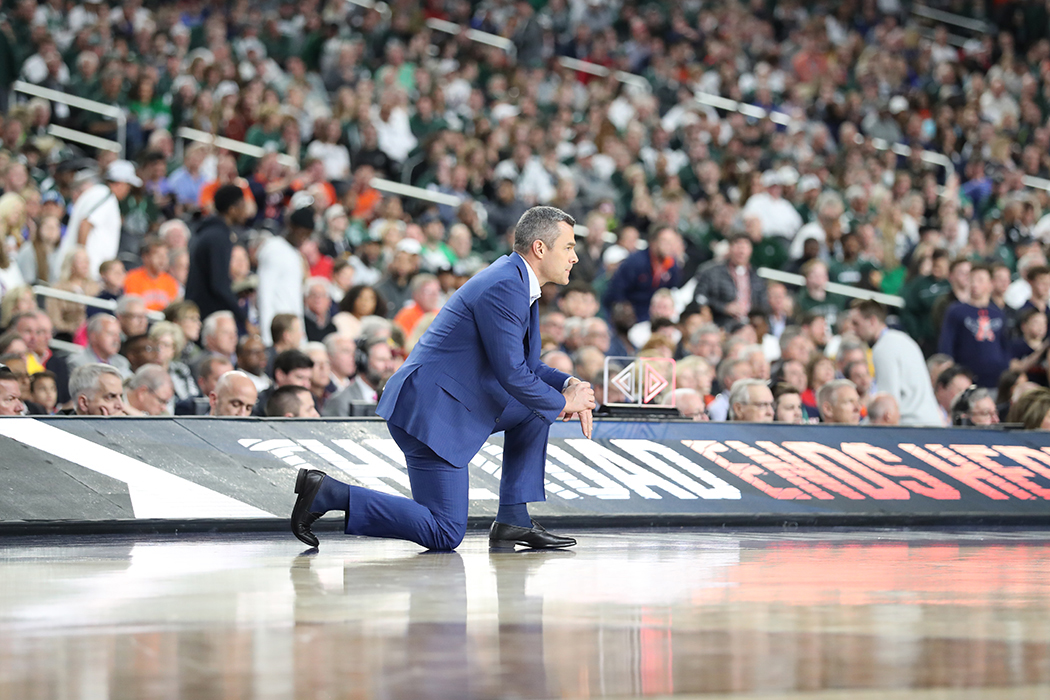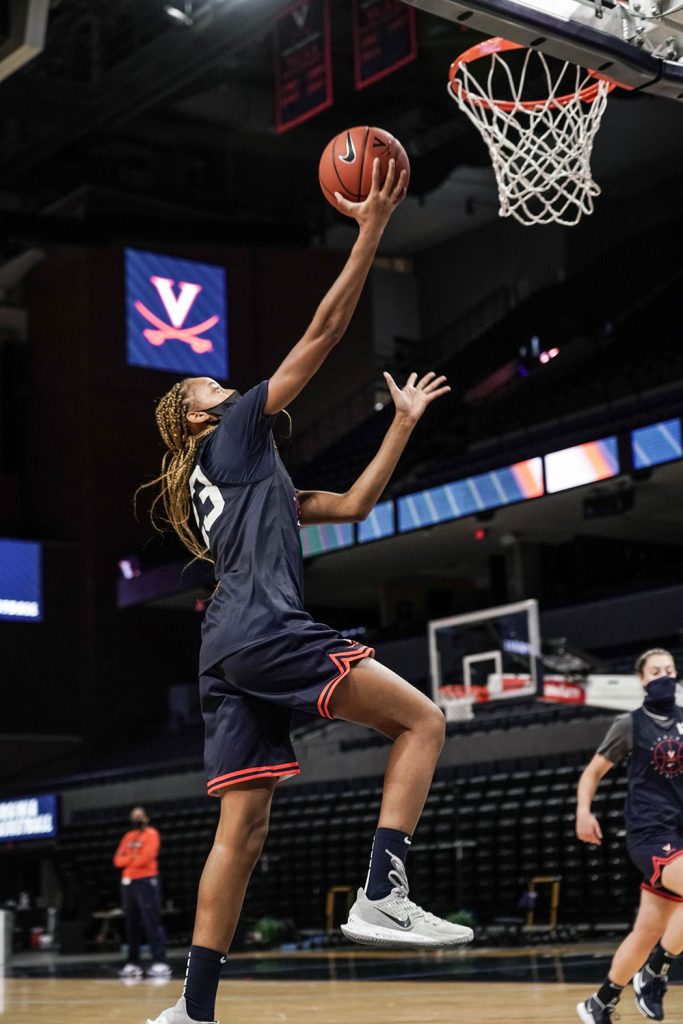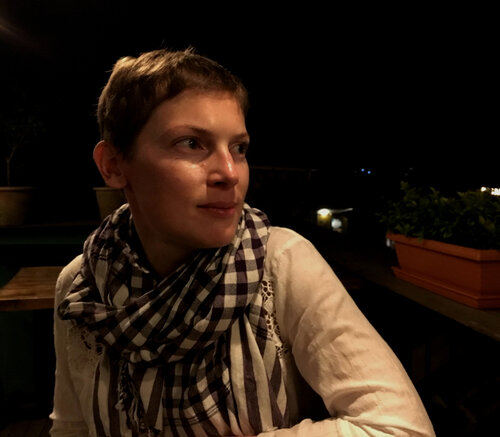Each day, we’ll have the latest news from the courtroom in the Sines v. Kessler Unite the Right trial. For coverage from previous days, check the list of links at the bottom of this page.
Marissa Blair narrowly missed getting hit by James Fields’ car when he plowed into a crowd of counterprotesters on August 12, 2017. Her best friend Heather Heyer was killed and her then-fiance suffered trauma that ultimately broke up their marriage. On Monday, she relived all of that in U.S. District Court as a plaintiff in Sines v. Kessler, the lawsuit that contends Unite the Right organizers conspired to commit racial violence.
With her hair in a ponytail and wearing a suit and heels, Blair, now an attorney who just passed the bar last month, took the witness stand.
She said didn’t hear about the August 12, 2017, Unite the Right rally until a couple of weeks before. She saw a poster for the event that had Confederate flags and Third Reich imagery. “It gave me Nazi vibes,” she testified.
“I ultimately decided I was going after the August 11 tiki-torch march,” she said. “It looked very intimidating. I decided to go to stand up for the people of Charlottesville.”
She and her fiancé Marcus Martin arrived downtown with her colleague Courtney Commander after the rally had been declared an unlawful assembly, and they met up with Heyer. They joined a “happy, joyous crowd” on Water Street.
Attorneys played a video Blair took of the march. Jurors could see the diverse crowd on Water Street and then on Fourth Street. In front of Blair in the video is Heyer with a long, dark braid. And then the camera seemed to spiral out of control.
“When you hear all the commotion, it’s when the car slams through,” she said. “The car barely missed me. Marcus pushed me aside.”
She described the terror, chaos, and confusion that followed. “We didn’t know what had happened,” she said. “I was looking for Marcus. I went to where we had been. I saw his red baseball hat.”
Her voice choked with emotion. “It was covered with blood.” People led her to Martin and she went with him to the hospital. There, she said, she learned Heyer was dead.
“I dropped to my knees and sobbed,” she said.
Blair said she could count her friends on two hands, and Heyer was one of them. “She said I was an optimist and she was a realist. She cared about people.”
Physically, she said she was lucky compared to so many other people who were injured, including Martin, who had a broken leg.
“My emotional scars were way worse than my physical ones,” she testified. “No one expects when you’re in that peaceful group that your friend would be killed standing up for what she believed.” She said she had survivor’s guilt and would ask herself, “Why is Heather gone when I’m still here?”
She worried that she would lose a new job after August 12 because of difficulty focusing, and said she hasn’t been able to read a book since 2017.
Pro se defendant Christopher Cantwell, aka the Crying Nazi, asked how she had finished law school if she couldn’t read a book. “I did have to read to pass the bar,” she said, but it wasn’t as easy as before when she’d done well in school.
Cantwell focused on the video she shot, and wanted to know if she’d seen people wearing bandanas and goggles.
“At the time that didn’t stick out in my mind,” she answered.
Monday’s testimony also included depositions from white supremacists who had come to Charlottesville for Unite the Right.
In 2017, Dillon Hopper was head of Vanguard America, the group with which James Fields was photographed throughout the day. Vanguard is a defendant in the case and the court has sanctioned it for failing to provide evidence.
Hopper was unable to recount names of the members of Vanguard, and yawned throughout his deposition. He said he’d met other defendants—Matthew Heimbach of Traditionalist Worker Party, Jeff Schoep with the National Socialist Movement, and some of the League of the South members—at a Pikeville, Kentucky, rally earlier in 2017.
Hopper said he was kicked out of Vanguard before the Unite the Right rally, and had talked to then-leader Thomas Rousseau after the murder. “He told me he let James Fields into the Vanguard America formation in Charlottesville,” said Hopper. “They didn’t know who he was. They just gave him a shield to make Vanguard America look larger.”
The plaintiffs’ attorneys have entered scores of exhibits from Discord Charlottesville 2.0 server, where Unite the Righters planned the rally.
In one, Hopper wrote, “At this rally, violence is imminent.” He compared the injuries suffered to a surfer going into the water and getting attacked by a shark.
When asked if he thought it was the counterprotesters’ fault they were hit by Fields’ car, he replied, “Absolutely. Yes.”
Hopper’s former Vanguard colleague Rousseau, a young man with long dark hair, also testified in a deposition. In an attempt to distance himself from Vanguard, Rousseau has started a new organization called Patriot Front.
Rousseau recalled discussing the rally on Discord with co-defendants Jason Kessler, Robert “Azzmador” Ray, and “maybe” Richard Spencer and Cantwell.
He traveled from Texas in a 15-person van, but could only remember Ray and the first names of two fellow passengers.
He was asked to read a Discord post he made that contained racial slurs. “I try not to use vulgarity anymore,” said Rousseau. But in another post, he made clear he wanted Vanguarders at Unite the Right to let people know that “fascism is fucking beautiful.”
League of South’s Michael Tubbs can be seen on many videos charging through lines of counterprotesters. He testified from Florida on a spotty video feed.
Tubbs, who has long gray hair, a moustache, and is missing a few teeth, joined LOS, a neo-Confederacy group, in 2000, and said the group “represented my views on Southern nationalism.”
The League’s website describes those views: “We see ourselves as the soul of the Hard Right. We will not compromise our vision of a southern homeland for whites.”
Tubbs said his group met with “similarly minded white nationalist groups”—Traditionalist Worker Party and the National Socialist Movement—at the Market Street Garage to march as a column to the rally at the statue in Lee Park.
A September 12, 2017, email from LOS founder Michael Hill to Tubbs and others said, “[W]e wanted a public confrontation in Charlottesville for the world to see and we got it.”
“Nobody wants a physical confrontation if they can avoid it,” testified Tubbs. However, several videos show him plunging into confrontations even once his group was in the park. “I was coming to the rescue of our friends who were beaten by communists,” he explained.
Unasked by the attorney, Tubbs offered, “I will tell you, it was the proudest moment of my life that day on the streets of Charlottesville.”
And Tubbs’ brawling paid off for the League of the South. An email from LOS member Charlene Braun said, “I must admit for recruiting, I show videos of Charlottesville. What a total badass you are. You helped me recruit 20 some guys.”
Tubbs tweeted six different times that “James Fields did nothing wrong.” Initially Judge Norman Moon refused to let plaintiffs’ attorney Alan Levine enter them as evidence. After lunch he’d reconsidered. “I rather abruptly ruled that Mr. Levine could not put in the tweets,” he told the jury. “I’m going to allow him to insert all the tweets so they will be in the record.”
The final white nationalist of the day was Vasillios Pistolis with Atomwaffen Division, which Southern Poverty Law Center describes as a “terroristic neo-Nazi organization.” Pistolis brought a flagpole with staples sticking out of it to the rally and was seen in video wielding it like a baseball bat. His testimony was notable for the number of times he took the Fifth Amendment.
He was beside Cantwell August 11 at the Thomas Jefferson statue at UVA. Asked if he’d assaulted a counterprotester, he replied, “I was never charged and I invoke the Fifth.”
A Discord post he made after August 12 said that an attendee “made antifa bleed yesterday by curb stomping,” a term he defined as slang for violence, “flawlessly” winning a fight.
With the four-week trial now entering its third week, there’s been some concern the trial won’t end by November 19. Moon floated the idea of having court Thursday, which is Veterans Day, a federal holiday, and said he’d run it by the jury Tuesday.
Testimony continues Tuesday at 9am.
Previous Sines v. Kessler coverage
Pre-trial: Their day in court: Major lawsuit against Unite the Right neo-Nazis heads to trial
Day one, 10/25: Trial kicks off with jury selection
Day two, 10/26: Desperately seeking jury
Day three, 10/27: Jury selection wraps up
Day four, 10/28: Plaintiffs and defendants make their opening arguments
Day five, 10/29: “I hear it in my nightmares,” says plaintiff Romero
Day six, 11/1: “I stopped being an outgoing, sociable person,” says plaintiff Willis
Day seven, 11/2: “Strike that”
Day eight, 11/3: Defendants fawn over Hitler
Day nine, 11/4: Quibbling about hate
Day 10, 11/5: League of the South takes the stand
